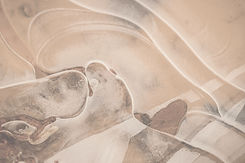
Blog 6 : Collage
Collage can help children develop their observation and classification skills. When making a collage, children need to select and classify different materials and images, which can help them develop a meticulous and organized way of thinking. Furthermore, collage can also help children learn about basic art knowledge such as color, shape, and texture, laying a foundation for their future art creations.Collage is a creative and fun art form that can promote children's holistic development, including creativity, aesthetic skills, hand-eye coordination, fine motor skills, observation and classification skills, and basic art knowledge. As an early childhood educator, I believe that incorporating collage activities into the curriculum can provide children with valuable opportunities for exploration, expression, and learning.



Photos By Ghada Bahur, 2023

Photo By Faten Wehbe, 2023




Photos By Rachel Zhang, 2023
I think the element of art that our group focuses on is space. In order to create a sense of depth and perspective in our work, my group and I arranged different materials and images on different levels, such as foreground, mid-ground, and background. For my particular piece, I used butterfly stickers of different sizes, overlapping and intertwining them to create a three-dimensional effect. Gahada cut the different patterns into similar shapes and put them on the paper in a neat way. Faten used different shapes and colors of paper cutouts to form a lady. By using materials and images of different shapes, sizes, colors, and textures, we are able to create different visual effects and a sense of space.
I think that helping children create collage artwork that represents a coherent theme starts with providing children with materials of different shapes and colors. Then introduce a specific theme or topic that children can use as the basis for their collage artwork. Or give children guidance by allowing them to incorporate their own moods or life circumstances as a backdrop.Let the children create freely, rather than teaching with a purpose. In the article by Janet N. Stevenson and Paul Duncum, it is stated that “The children were observed pasting paper shapes without any obvious purpose, order, or pattern. These collages appeared to be the product of exploration of the materials and the cutting/pasting routine rather than an attempt to place the pieces of paper in specific positions or arrangements.”(Stevenson, J. N., & Duncum, P.,1998) As children complete their work encourage children to reflect on their work and discuss how it represents the theme. It is important that children are given the opportunity to express their ideas. This will help them develop their critical thinking and communication skills.



